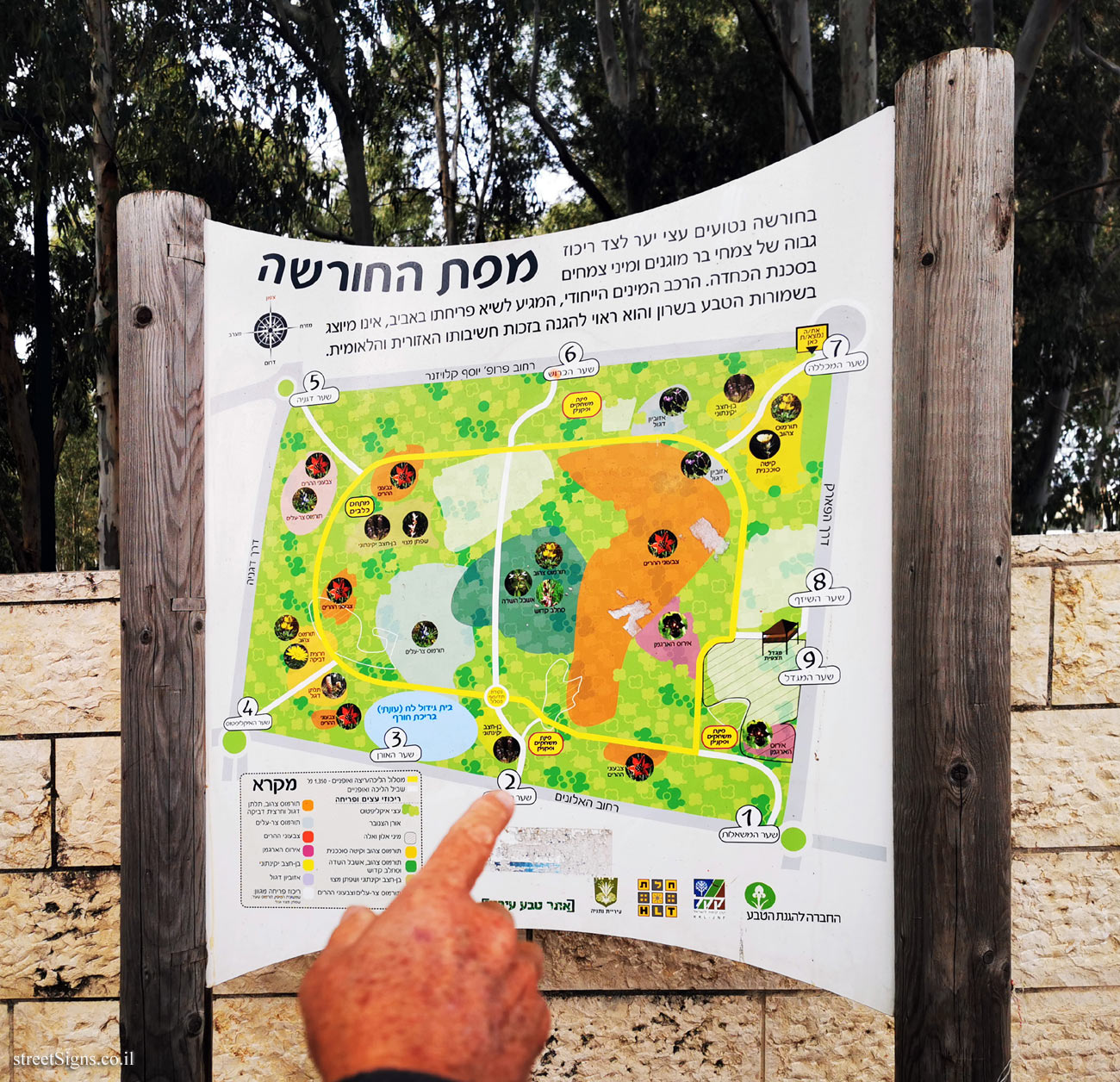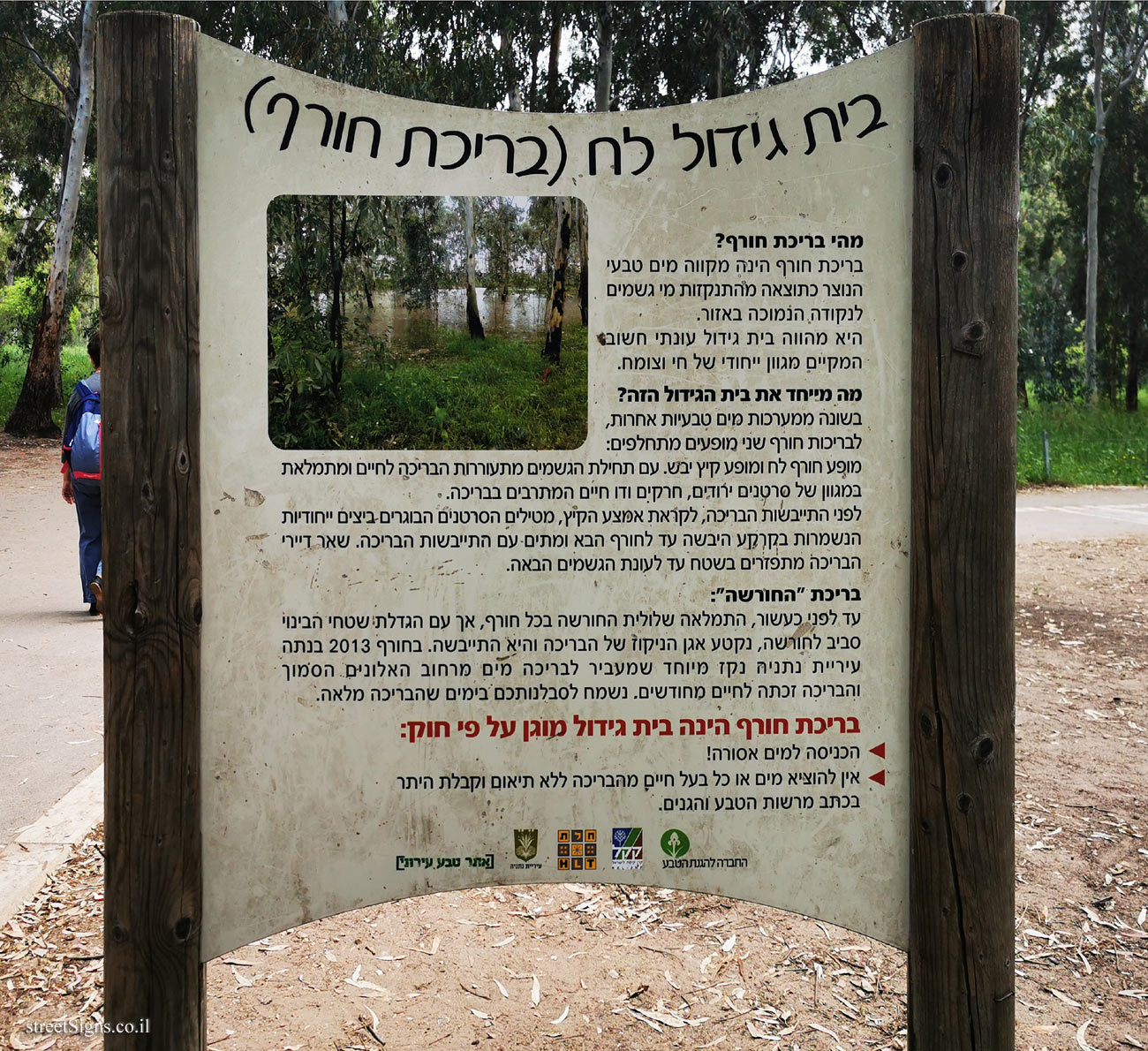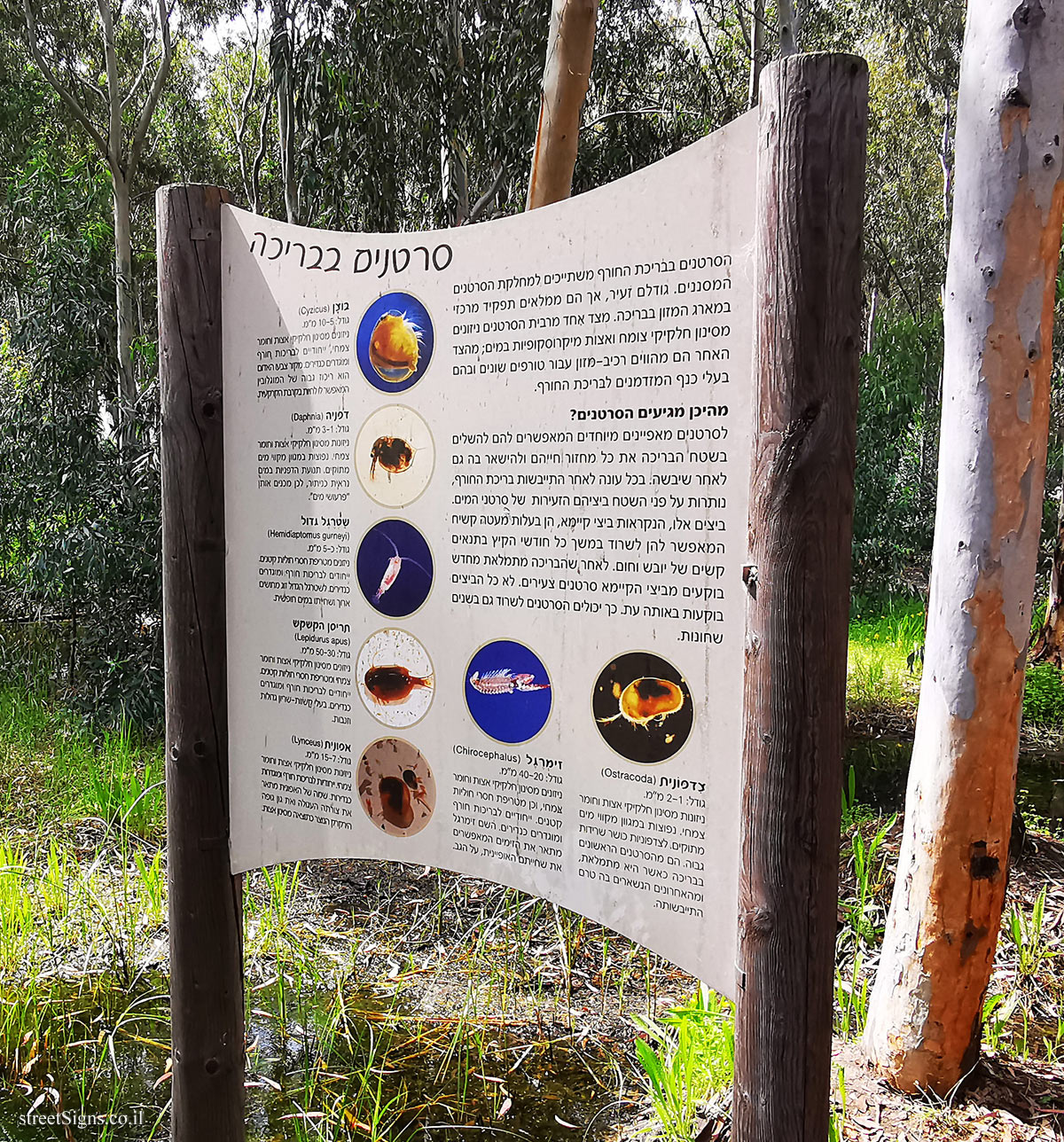One of the signs depicting the flora and fauna of the sergeant’s grove
 Click for sign's details
Click for sign's details The winter pool in question appears on the following sign
 Click for sign's details Translation of the text on the sign
Click for sign's details Translation of the text on the sign:
Crabs in the pool The crabs in the winter pond belong to the filter crab class (Branchiopoda). They are small in size, but they play a major role in the food web in the pool. On the one hand most crabs feed on filtering plant particles and microscopic algae in water; On the other hand, they are a food component for various predators, including occasional winged creatures for the winter pool.
Where do the crabs come from? Crabs have special properties that allow them to complete the entire life cycle in the pool area and stay in it even after it has dried up. Every season after the winter pool dries up the tiny eggs of the water crabs remain on the surface. These eggs, called viable eggs, have a hard shell that allows them to survive throughout the summer months in harsh conditions of dryness and heat. Once the pool is refilled, young crabs hatch from the viable eggs. Not all eggs hatch at the same time. This way the crabs can survive even in parked years.
Ostracod (Ostracoda) Size: 2-1 mm.
Nourished by filtering algae particles and plant matter. Common in a variety of freshwater bodies. The ostracodes have a high survivability. They are among the first crabs in the pool when it fills up, and the last ones left in it before it dries out.
Chirocephalus neumanni (Chirocephalus) Size: 10-20 mm.
They feed on the filtration of algae particles and plant matter, as well as the insanity of small invertebrates. Unique to winter pools and defined as rare. The name Zimmergal (in Hebrew) describes the gills that allow their typical swimming, on the back.
Crustacean (Cyzicus) Size: 10-5 mm
Feed on algae particle filtration and plant material, unique to winter ponds and defined as rare. The source of its red color is a high concentration of hemoglobin that allows it to live near the bottom.
Daphnia Size: 3-1 mm.
Nourished by filtering algae particles and plant matter. Common in a variety of freshwater bodies. The movement of the Daphnia in the water looks like a jump, which is why they are called "water fleas".
Hemidiaptomus gurneyi Size: about 5 mm.
Feed on insane small invertebrates. Unique to winter pools and defined as rare. The large Copepod has a long pair of tentacles and a free form of swimming in water.
Tadpole shrimp (Lepidurus apus) Size: 50-30 mm.
Nourished by filtering algae particles and plant matter and insanely small invertebrates. Unique to winter pools and defined as rare. Have large armor arches and tails.
Lynceus Size: 5-17 mm.
Nourished by filtering algae particles and plant matter. Unique to winter pools and defined as rare. The name of the Lynceus (in Hebrew) describes its round shape and the greenish body hue created as a result of algae filtration.
Learn about:


 Click for sign's details
Click for sign's details  Click for sign's details
Click for sign's details